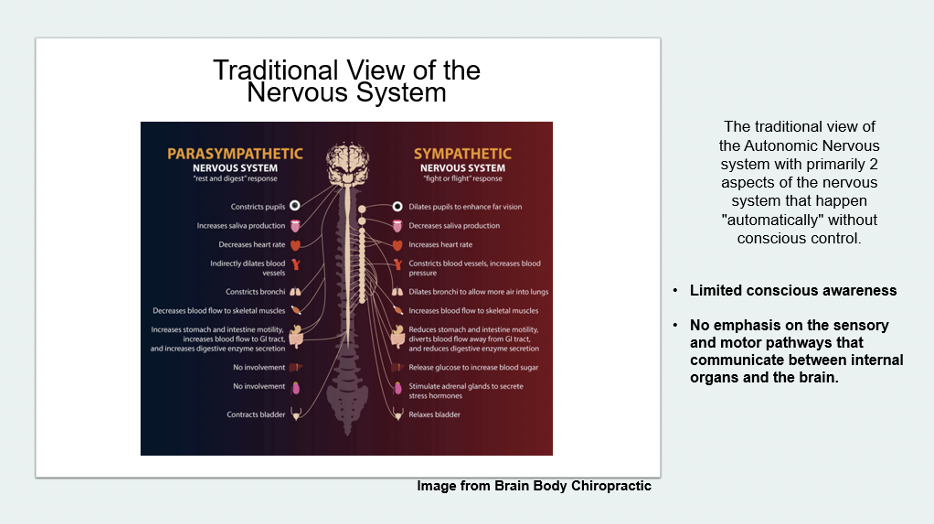How To Rewire Your Brain For Inner Peace
Although it may seem like inner peace is a concept reserved only for monks or highly spiritual people, the truth is that your mind is innately wired for peace. The problem is that our environment often takes us out of a peaceful state, and primes us for feelings of stress and vigilance. Luckily, there are tools and techniques that you can incorporate into your life to wire your brain for peace and calm.
Wouldn't it be nice to be able to "shut off" your stress response and move into a state of peace at any time? Most people don't know this, but your brain is actually built to do just that. The problem is, with all of the perceived threats in our lives, most of us get stuck in stress mode and don't know how to kick inner peace into gear.
In this article, we'll discuss what "inner peace" is, why this state of being is so hard to capture in modern society, and how simple techniques can help you rewire your brain for more peace and less chaos.
What Is Inner Peace?
Inner peace is a state of calm and balance that can exist within you even when the events in your life may seem out of balance or stressful. If you close your eyes and picture what inner peace means, it's less of an image and more of a feeling. Sure, your home may be a mess, your schedule may be a bit hectic, and perhaps your finances aren't where you would like them to be – and yet, you're okay.
Having a deep feeling of "being okay" and perhaps even feeling content is something that eludes many people today. It's all too easy to look outside yourself and try to control the various ever-changing factors in your life in hopes that you will feel settled. The problem is, trying to control your outer world is just a setup for disaster. When you can turn your attention inward, however, and begin to notice your reactions to your outer world, the power begins to build within your mind and body. Only from here may an inner peace and a sense of control begin to emerge.
The traditional view of the autonomic nervous system essentially states that the autonomic nervous system has two modes: sympathetic and parasympathetic. When you sense any threats in your environment, your sympathetic mode becomes active, and you enter "fight or flight." Parasympathetic mode is the opposite side of the coin: when your parasympathetic mode is activated, your breathing slows down and becomes more deep and relaxed. Your blood pressure drops, heart rate slows, and your blood flows to your internal organs. Parasympathetic mode is considered the "rest and digest" mode.
So, how do you wire your brain to prime yourself for more inner peace? Use the polyvagal perspective and read on.
Your vagus nerve, also called "the wandering nerve," contains several branches and acts as a primary component of your parasympathetic nervous system; it essentially “wanders” from your brain to your organs. When you tone your vagus nerve through sensory input, such as relaxation techniques and fear management, it enhances your tendency towards ventral vagal and parasympathetic (calming) mode, and away from sympathetic (threat) dominance. Below we explain how Brain Harmony can help with those techniques.
Instead of just 2 ways of functioning, the polyvagal theory opens up the different branches of the vagus nerve, and allows an accelerated understanding that we are neurologically wired to be able to move in and out of a variety of autonomic states. Restorative body functions that can be awakened and hardwired so you can access inner peace more easily and enhance conscious control over that state. Here is a short summary of the different branches of the vagus nerve and their function within the nervous system.
Ventral Vagal = Enacts the feeling of safety by inhibiting the heart rate and supporting calmness. Ventral vagal softens the immobilizing response of other branches.
Sympathetic branch = Causes the feeling of danger, the need to recruit resources to mobilize and fight!
Dorsal Vagal branch = Causes a feeling of threat to one’s life, immobilization, an evolutionary defense.
When there is an overactive sympathetic response and dorsal vagal responses, the neural energy is drained without an ability to restore, so the situation becomes chronic as the person is stuck in a sympathetic response. Luckily, the system ability to modulate in and out of various states is WITHIN our conscious control and is an important difference between conventional and polyvagal views of autonomic nervous system regulation.
How To Rewire Your Brain For Inner Peace
For many people, sympathetic dominance has ruled their lives, which means that there is some sympathetic vigilance in the background, even while resting. If you can relate to this, it may feel like your brain is wired for the stress response, and in some ways, it is.
But does that mean that you're stuck in stress mode for life? Luckily, the answer is no.
Your brain exhibits something called neuroplasticity. Neuroplasticity is the ability of your brain to form new connections and prune apart old ones that are no longer serving you. In other words, you can rewire your brain to be more peaceful and grounded.
Using the polyvagal perspective and the below techniques, you can train your brain to move towards ventral vagal and parasympathetic dominance (a peaceful state) as its default, instead of getting stuck in sympathetic mode (fight or flight) or even dorsal vagal mode (freeze or fold).
#1 Meditation
Meditation is quickly becoming one of the most popular alternative methods for managing stress. Mindfulness meditation, in particular, has been well researched for its ability to help people move away from anxious and stressful ways of thinking to more open-minded states.
In fact, studies even show that the expansion of awareness that comes with mindfulness is likely due to a shift away from sympathetic mode into parasympathetic mode. When you take your focus off the outside world and come home to yourself in meditation, it creates space in your mind and quiets the chatter that often leads to stressful thoughts.
Here is a simple mindfulness meditation technique to try:
● Sit comfortably with your spine erect
● Set a timer for five to ten minutes
● Close your eyes and begin to notice your breath
● Keep your attention close to your natural breath, noticing each inhale and exhale and the space between them.
● As your mind begins to wander (and it will), gently bring your attention back to your breath.
● Keep going until your timer sounds its alarm.
The key here is to not try to change your breath or control it in any way. It's also important that you not judge yourself or your mind for wandering. Once you start judging, you lose your intention to simply notice the breath.
#2 Deep Breathing
Remember how your breathing changes when you enter either different states? The external factors in your environment elicit a shift in your body that alerts you to either quicken your breathing, or relax it.
Well, as it turns out, the opposite also works. You can "signal" to your body that you're relaxed by simply slowing down your breathing and extending your exhale when you feel overwhelmed or stressed. When you start to breathe slowly, it sends a signal to your mind and body that all is well and can physiologically begin to shift your autonomic nervous system into parasympathetic mode.
Here's a simple deep breathing technique:
● Sitting up in a relaxed posture, take a deep breath in for a count of five
● Hold that breath at the top for a count of three
● Release the breath for a count of eight
● Hold at the bottom for a count of three
● And repeat two to five times
This whole process should take no longer than two minutes but can produce significant changes in your nervous systems state. Many of our clients speak of this impact of an easy and fun with a guided method with the Wim Hof Breathing Method.
#3 Loving Touch
Loving touch, which could mean anything from hand-holding, a hug, massage, or beyond, upregulates the production of the "love" hormone, oxytocin.
Research shows that when you engage in any physical form of touch that is welcome, whether it be from a friend, partner, or family member, it increases oxytocin and leaves you feeling more open, loving, and safe. In doing so, oxytocin helps you manage stress and enhances overall wellbeing.
#4 Chanting
Chanting mantras such as "Om" is a practice that's been used in ancient Vedic traditions such as yoga and Ayurveda for thousands of years. When you chant, it can create peace of mind by filling your thoughts with either a sound or a word that can take the place of mental chatter.
Research shows that chanting can improve your mood, reduce stress, and improve feelings of wellbeing. What's more, when you chant in a group setting, it can make you feel more connected to the people around you.
How Brain Harmony Can Help
“We use sound, vibration, and alpha waves tools to supply the needed sensory input via sound to enhance vagal tone, and bring about a sense of safety and security to the nervous system.”
One of the most powerful ways to enhance feelings of peace and prime your brain for vagal regulation and parasympathetic activation.
At Brain Harmony, our goal is to help all of our friends reach a state of inner peace, and our first step in doing so is to train their nervous system by stimulating vagal regulation. We use sound, vibration, and alpha waves tools to supply the needed sensory input via sound to enhance vagal tone and bring about a sense of safety and security to the nervous system.
By bringing our friends into a place of peace and calm, we can then introduce other tools that help to reorganize the brain and produce lasting changes in areas of cognitive function, attention, memory, motivation, creativity, and more.
While many people begin our program somewhat skeptically, once they go through our first phase of vagal regulation, their minds are much more open, and they can begin to see all of the possibilities that were once clouded by stress or anxiety. From this place of inner peace, we dive even further into neurological optimization.
"It's easy to use, you're expertly guided, you can do it on your own at your own pace, and it can have a profound impact on your life. I really feel that this was the missing piece to help my overall quality of life." ~Nancy, mother of child with severe ADHD
Takeaway
Trying to control your environment to maintain inner peace will always be an uphill battle. There truly is no way to know what stressors may enter your awareness on any given day.
However, what you can do is build the tools of inner stillness and calm, which will make it much easier to deal with the ups and downs that we all face.
If you're looking to enhance your sense of inner peace and build more calm into your life, reach out to Brain Harmony today for a Free Consultation to learn how our process can help you on your journey.





